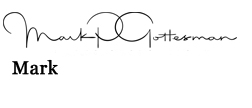Friday July 3rd, 2020


My early childhood equipped me really well for my portrait work: The quick encounter, where you are not going to know the subject for very long. These days I am much more comfortable with the fifteen minute relationship, than I am with a life long relationship. — Annie Leibovitz

I am involved in several Photography Groups on Facebook. One Group is specifically for beginners in photography and with those more experienced and more knowledgeable giving a helping hand where needed.
A friend of mine who actually is a member of two other Photography Groups had posted two very lovely images of flowers on her own timeline. Upon request she had given me permission to share these on the beginner group. I automatically gave her photo credit and with the added benefit of my Administrative Powers I was able to turn Comments Off for those particular images. Just in case they would link back to her page I thought it very inappropriate for questions or ideas to be shared. I created two threads to discuss said images.
One person who happens to be very new to the group made some very interesting observations of one particular image. Mentioning about where the image was leading the viewers eye as well as to question a part of the composition where a brighter color was peaking its way into the background.
Keeping in mind that the basic skill set and knowledge starts at proper exposure and knowing what and how all the buttons, knobs and menu choices effect the image. An add on to these basic set of skills is understanding and putting into practice the concepts of Composition.
Beginning photographers have a tendency to get caught up into a particular lesson where they find comfort and settle in so as to Not accept further information or ideas. It then becomes difficult to get them to open their minds for further understanding. As funny as this sounds this Is the one actual situation that will give the instructor or mentor the understanding as to whether this person will succeed to higher levels of artistic abilities. Blah Blah Blah this is probably the reality of a student thinking they have enough knowledge to succeed on they’re own!
I’ve been doing this teaching photography thing soo very long that I can see this situation ahead of time and trying to avoid it becomes problematic to opening up the mind so as to not get caught up in a learning loop. Each student is obviously different and certain situations has a cause and effect. When you listen to an open mind pointing to things and questioning the reason of what the artist decided to do on things on a much higher level than the students comprehension. Is soo humbling as to make one be a witness to a possible one of a kind that one special person. I can’t explain it any better.
What’s the next lesson after all this? Lighting! Using reflectors to bounce natural or added lights to a particular area to help balance the overall subject. Adding Lights to give the darker areas some help in balancing and bringing that dark zone into a more acceptable tier.
Natural Light is the best light. Sometimes this light needs a drop of help when it comes to an artistic photography situation. The artificial methods used in capturing a scene with today’s technology is still way behind the capabilities of the human eye. A Photographer still needs to understand that using extra tools will help make an image better than the current limitations.
The one difficult problem is when is enough enough? During shooting we can be creative in bring all parts of the image within proper levels to fulfill the Exposure Triangle. It’s the Editing part that can either make or break the final results. If a part of the image is overworked the editing becomes obvious. It is way too easy to develop an obsession and become fixated on a certain part of an image if it becomes troublesome. This is when experience kicks in to say enough!
We’ve all heard the stories from a magazine article when a model has been retouched in some way and readers get offended because it’s misrepresenting the product or model in some way? I’ve actually heard people say they are against editing of any kind! Look to each their own but it’s comparable to a baker putting all the ingredients into a pan then Not placing that pan into the Oven! If the average person is soo offended by a slight error in editing wouldn’t it be fun to show them how much a finished image in a magazine is actually changed from the original? Ha
Let’s see which image should I use?

This image was taken during a photo workshop I was part of. This particular image was from when we moved to the buildings roof and I had grabbed this because it just looked good, at the time. There were problems though. An electric cable laying on the floor. Distracting other objects also in the frame. This one image was a good lesson for me to help my editing skill set in image repair.
Have a Great Weekend everyone! Stay Safe! Wear Protective Face Coverings when needed. For those in the States with us Have a Happy 4th of July Celebrations!

